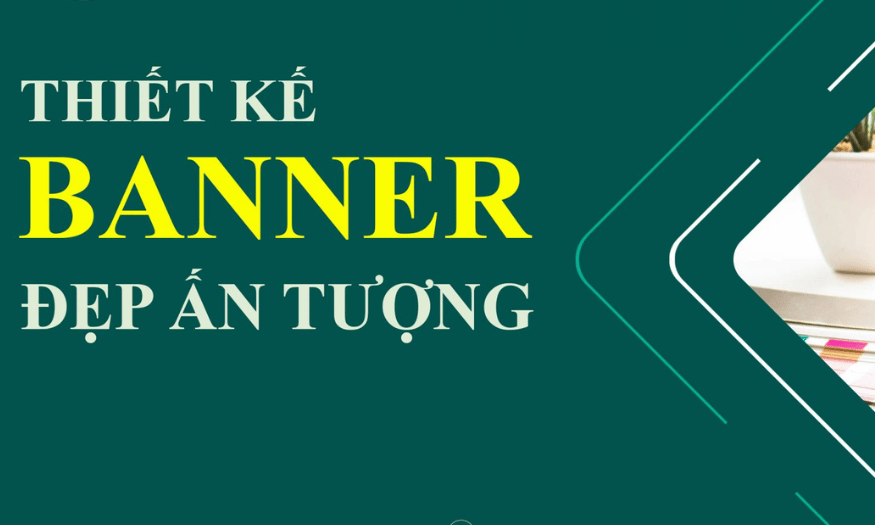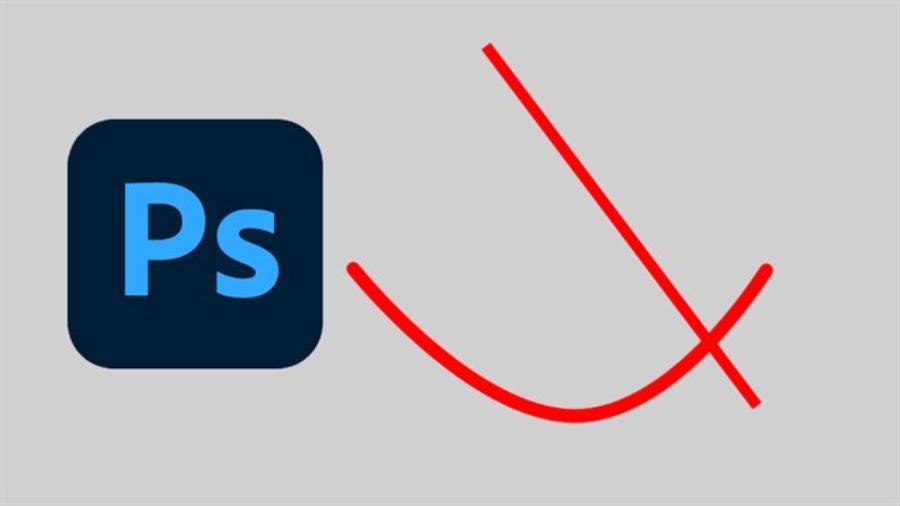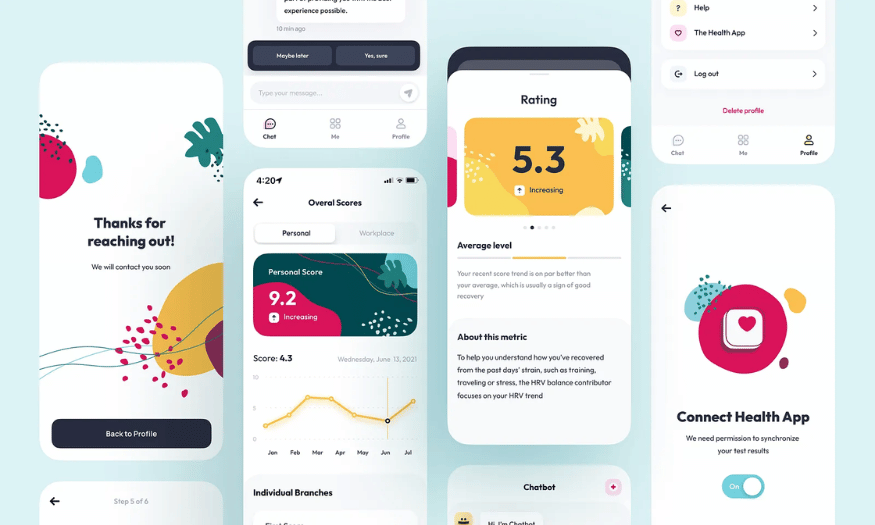Best Selling Products
6 Steps to Design Banners for Designers
Nội dung
- 1. What is a banner?
- 2. Purpose of banner
- 2.1 Badge Banner
- 2.2 Organization and union banners
- 2.3 Sports Banners
- 2.4 Advertising banners
- 3. What does a banner include?
- 4. The role of banners in advertising campaigns
- 4.1 Help businesses retarget their brands
- 4.2 Increase customer brand awareness
- 4.3 Highlight new products/services
In the world of graphic design, banners are not only an advertising tool but also a work of art that shows the creativity and style of the designer. Creating an impressive banner is not easy, but with the right steps, you can turn your ideas into reality easily and effectively. In this article, Sadesign will guide you through 6 steps to design the perfect banner, from defining the goal, choosing the format, to using colors and fonts appropriately. Let's explore to improve your design skills.

In the world of graphic design, banners are not only an advertising tool but also a work of art that shows the creativity and style of the designer. Creating an impressive banner is not easy, but with the right steps, you can turn your ideas into reality easily and effectively. In this article, Sadesign will guide you through 6 steps to design the perfect banner, from defining the goal, choosing the format, to using colors and fonts appropriately. Let's explore to improve your design skills.
1. What is a banner?
Banners are understood as a diverse advertising tool, which can exist in the form of images, text, or a harmonious combination of both elements. Not simply a part of a promotional campaign, banners are also a work of art, meticulously designed to attract attention and stimulate interest from viewers. With a unique design, banners can convey messages clearly and effectively, helping consumers easily identify products and brands.
Banners are not only limited to the virtual space but also extend to the real world. They can be found on various platforms, from websites, social networks, mobile applications to outdoor billboards and banners at major events. With this versatility, banners have become an indispensable part of modern communication strategies of businesses, helping them connect directly with their target customers effectively.
.png)
2. Purpose of banner
The purpose of using banners is extremely diverse and rich, depending on each specific context and strategy of the business. Each type of banner is not simply an advertising tool but also a way to build a brand, increase customer loyalty and promote sales. Understanding the purpose of use will help designers and marketers create the most suitable and effective banners.
2.1 Badge Banner
Badge banners are not just a means of advertising; they also carry a deep meaning of honor and prestige. Used to represent an organization, group or individual in events, ceremonies or competitions, badge banners help affirm the position and brand of the object it represents. These banners are often designed solemnly, with typical symbols and colors, to create a strong and memorable impression in the viewer's mind.
Moreover, badge banners also play an important role in conveying the message and values of the organization. They are not only a decoration but also show the commitment and team spirit of the members. When used in large events, badge banners can create a solemn atmosphere and enhance the organization's recognition in the public's mind.
2.2 Organization and union banners
Organizational and union banners are designed to increase awareness and convey the organization’s message to the community. As a central part of events, these banners not only attract attention but also demonstrate the solidarity and interests of members. These banners are often seen during protests, marches, or other activities calling for policy change, helping to create a strong bond between the organization and the community.
What is special about organizational banners is their ability to convey messages clearly and easily. They not only help viewers identify the brand but also encourage them to participate in the organization's activities, thereby enhancing interaction and connection between the organization and the public. The presence of banners at major events also contributes to creating a vibrant atmosphere, encouraging the spirit of the participating members.
2.3 Sports Banners
Sports banners are an indispensable part of major sporting events. They are not only used to support teams or athletes but also to promote sporting tournaments and events. These banners are often hung in stadiums and competition areas, creating an exciting and encouraging atmosphere. With outstanding designs and strong messages, sports banners have the ability to attract attention from afar, contributing to the excitement of fans.
Furthermore, sports banners have the ability to connect brands with fans. Through sponsorship and presence on banners during events, brands can reach and build relationships with a large number of potential customers. This not only helps increase brand awareness but also creates valuable business opportunities for companies in the sports industry.
2.4 Advertising banners
Banner advertising is the most popular type of banner and is widely used in marketing campaigns. The main purpose of banner advertising is to attract the attention of potential customers, effectively convey advertising messages and stimulate purchasing actions. These banners can appear on many platforms, from online media to outdoor billboards, helping businesses reach customers flexibly and effectively.
What makes banner advertising special is its ability to create direct interaction with consumers. A well-designed banner is not just an advertising message but also an invitation, encouraging customers to take immediate action. By using bold colors, impressive images and clear messages, banner advertising can create a strong attraction that consumers cannot ignore.
.png)
3. What does a banner include?
Banners often include many important elements, each of which contributes to creating an impressive advertisement. First, the image is the highlight that attracts the viewer's eyes. One or more attractive images not only help convey the message visually but also create strong emotions for the viewer. These images need to be carefully selected, so that they are suitable for the content and purpose of the banner, thereby creating a close connection between the image and the message.
In addition to images, text is an indispensable element to clarify the banner message. The core message or main headline should be short and concise but still powerful enough to make an impression. The brand logo also plays an important role, helping viewers easily identify the brand and create trust. In addition, the call to action (CTA) is the decisive factor, encouraging viewers to take a specific action such as "Buy Now" or "Sign Up". Finally, additional information such as address, phone number or promotions can also be included to support consumers in the decision-making process.
.png)
4. The role of banners in advertising campaigns
Banners are more than just a part of an advertising campaign; they are also a bridge between businesses and customers. One of the most important roles of banners is to help create a customer database for businesses. When consumers interact with banners, businesses can collect information about their preferences and shopping behavior. This not only helps identify the target audience but also lays the foundation for implementing more effective marketing campaigns in the future.
4.1 Help businesses retarget their brands
When a customer visits a website but does not leave their information or take any action, a banner can be a useful tool to attract them back. Unique and creative banner designs can attract attention and encourage customers to learn more about a product or service. This is especially important in maintaining customer interest and maximizing conversions.
Additionally, banners can target people who have interacted with your brand but have not yet completed a purchase. By using relevant messages and compelling images, banners can engage customers and motivate them to take the desired action.
4.2 Increase customer brand awareness
Using banner ads is an integral part of any branding strategy. A well-designed banner not only increases brand awareness but also creates a lasting impression in the minds of customers. When customers see the banner frequently across different platforms, they will easily recognize the products and services that the business offers.
Placing banners on high-traffic websites is also a smart strategy. These sites often provide interesting and useful information, helping to build trust with customers when they click on the ad. However, businesses need to pay attention to how they place banners so that they match the content of the page. For example, cigarette advertising banners should not be placed on pages for children or pregnant women to avoid causing offense and creating a bad impression.
.png)
4.3 Highlight new products/services
When a new product or service is introduced, using a banner is one of the most effective ways to ensure that it is not overlooked in the mass of other information. With bright colors, eye-catching images and clear messages, banners have the ability to quickly attract the attention of potential customers. This not only increases consumer interest but also creates an opportunity for the new product to be warmly received.
Furthermore, banners can be optimized for a variety of platforms, from online advertising to outdoor billboards. When designed creatively and strategically, banners can be a powerful tool for promoting new products, helping businesses create a strong first impression with consumers.
5. What are the steps to design a banner?
To create an effective and memorable banner, you need to follow a clear process to ensure that your banner not only attracts attention but also communicates a message clearly. Banner design is more than just arranging images and text; it is the art of combining colors, images, and content to create a perfect advertisement. Here are the specific steps you should follow to achieve that.
Every step in the banner design process is important, and skipping any step can impact the final result. From identifying your audience to testing and editing, each stage needs to be meticulously executed to ensure that your banner not only looks great but also effectively communicates your message.
5.1 Step 1: Identify customer target and purchasing behavior
Understanding your target audience is the first step in the banner design process. This includes not only determining their age, gender, and interests, but also understanding their specific shopping behaviors and needs. When you understand your audience, you will be able to choose the right colors, images, and messages to create a strong first impression.
A deep understanding of your target audience also helps you flexibly adjust the content of your banner, making it more attractive to different customer groups. A banner designed with attention to the psychological characteristics of customers will easily attract their attention and encourage them to take action.
5.2 Step 2: Identify online channels to choose the right size
Banners can appear on a variety of online channels, including websites, social media, and email, each with its own size and format requirements. Therefore, it is important to identify your online channels. Once you know where your banner will be displayed, you can choose the appropriate size and format, ensuring that it displays properly and engages viewers on all devices, from desktops to mobile phones.
Choosing the right size not only affects visibility but also the effectiveness of the message. A banner that is too small can be overlooked, while a banner that is too large can be distracting. The balance between size and content is important to create a harmonious and attractive design.
5.3 Step 3: Determine the message the banner conveys to customers
An effective banner must have a clear and easy-to-understand message. It is essential to identify the main message you want to convey, whether it is a product benefit, a special offer or a call to action. This message needs to be short but concise, attractive and quickly impress the viewer.
In addition, the message also needs to be adjusted to suit the psychology and needs of the target customer. A message that touches the emotions and desires of customers will create a strong motivation, encouraging them to act immediately.
5.4 Step 4: Build layout and design advertising banner
The layout of the banner plays an important role in guiding the viewer's eyes to the main message and call to action. You should use a neat, logical layout, with a harmonious arrangement of images, text and logo. Colors and fonts should also be carefully selected to ensure aesthetics and readability on the banner background.
A good layout not only creates balance but also makes it easy for viewers to access information. Proper division of space will enhance the ability to convey the message and encourage customers to take the desired action.
5.5 Step 5: Insert CTA (Call To Action) – Call to action
A CTA is an essential element of any banner that guides customers to take the desired action, such as “Buy Now,” “Sign Up,” or “Learn More.” For maximum effectiveness, the CTA should be prominently placed, easy to see, and use contrasting colors to attract attention.
The CTA text should be clear, concise, and have a strong call to action. An effective call to action will motivate customers, make them feel the need to act immediately, thereby increasing the banner's conversion rate.
5.6 Step 6: Check and edit
Once you have finished designing your banner, the next step is to test and edit it to make sure everything is perfect. You need to review the results, evaluate the effectiveness of the banner and make necessary adjustments to suit your customers' tastes. This will not only improve the quality of the design but also ensure that the banner will attract more attention.
6. Conclusion
Banner design is not just about arranging images and text, but also the art of effectively conveying a message. Through the 6 design steps we have discussed, you have a clear view of this process. Remember, each banner needs to be attractive, easy to understand and suitable for the target audience. Don’t hesitate to experiment and be creative, because it is the difference that makes your product unique.












































